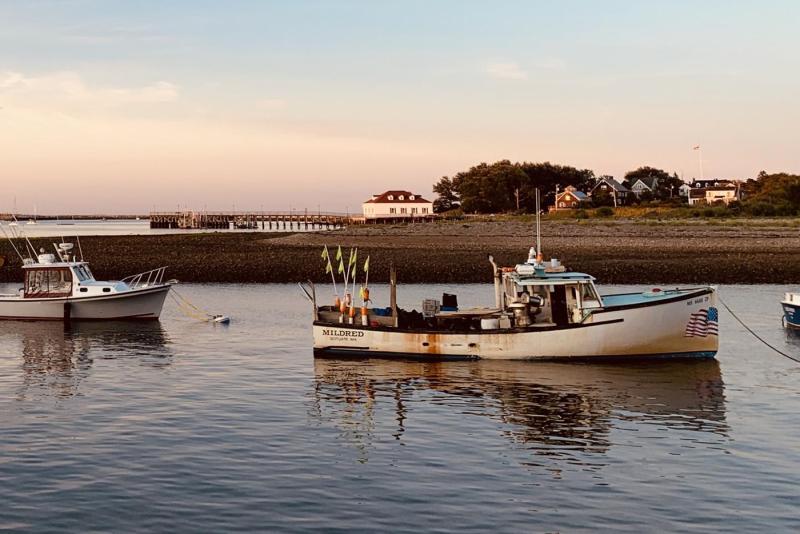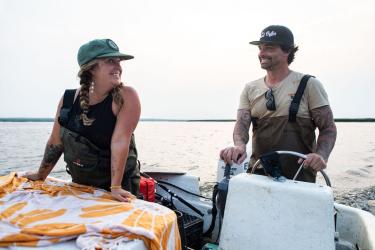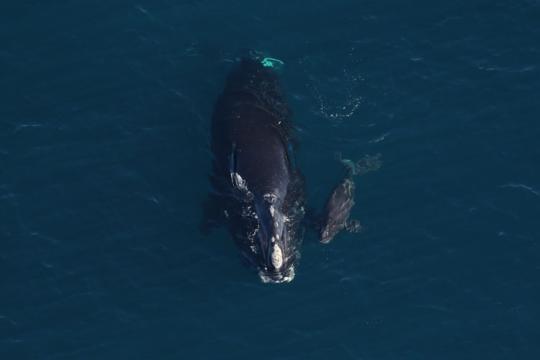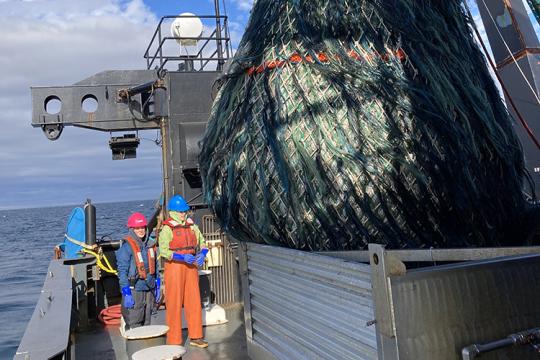Two new reports show the Northeast continental shelf marine ecosystems are experiencing notable ocean warming and changes in oceanography. The reports include new indicators that evaluate environmental justice concerns. To learn more about the 2022 State of the Ecosystem Reports, please join us for a public webinar on May 11, 2022, 12:00-1:00 EDT. Register for the webinar here.
The Northeast shelf extends from North Carolina to Maine and is one of the most productive marine ecosystems in the United States. The annual New England and Mid-Atlantic State of the Ecosystem reports capture the big picture of the biology, climate, physical, and social conditions of the marine ecosystem. The assessments inform fisheries management by showing how the ecosystem is connected and changing. This ecosystem change, in turn, affects the distribution and abundance of marine species from phytoplankton to whales.
“We develop these reports along with the regional fishery management councils to provide information on current social, economic, and environmental conditions and address priority questions on factors affecting their management objectives. Every year, the Mid-Atlantic Fishery Management Council uses these reports to update their ecosystem level risk assessment. This gives managers a quick overview of conditions that may affect fisheries,” said Sarah Gaichas, co-editor at the Northeast Fisheries Science Center.
Record High Temperatures and Changing Ocean Conditions
Ocean temperatures continue to warm at both the surface and bottom throughout the Northeast Shelf. Seasonal sea surface temperatures in 2021 matched or exceeded the record temperatures from 2012. Marine heatwaves measure not just high temperature but how long the ecosystem is subjected to the high temperature. The region has been experiencing more frequent and intense marine heatwaves over the last decade, including 2021. Changing oceanographic conditions, such as the stability and location of the Gulf Stream is affecting the habitats of multiple federally managed species on the Northeast shelf. 2021 was distinguished by a large number of warm core rings —currents that flow in a circular motion and broke off from the gulf stream — present in May and June, which likely partially contributed to the movement of warm, salty offshore waters onto the shelf.
Fishing Communities Vulnerable to Environmental Justice Concerns
There are environmental justice concerns with fishing communities that are most vulnerable to changes in fishing patterns. They may have a lower ability to successfully respond and adapt to change. Federal agencies are required to address disproportionately high and adverse human health and environmental effects of federal actions on minority and low-income populations. Three of the existing NOAA Fisheries Community Social Vulnerability Indicators can be used for mandated environmental justice analysis:
- Poverty Index
- Population Composition Vulnerability Index
- Personal Disruption Index
The State of the Ecosystem reports highlight the top 10 most engaged and the top 10 most reliant commercial and recreational fishing communities. It also examines their associated environmental justice vulnerability. The top five most engaged commercial fishing communities in New England and the Mid-Atlantic and their associated environmental justice rankings are below. Communities with environmental justice concerns are ranked medium-high or above.
New England
- New Bedford, Massachusetts (High)
- Narragansett/Point Judith, Rhode Island (Low)
- Gloucester, Massachusetts (Low)
- Chatham, Massachusetts (Low)
- Portland, Maine (Medium)
Mid-Atlantic
- Cape May, New Jersey (Low)
- Reedville, Virginia (Low)
- Montauk, New York (Low)
- Point Pleasant Beach, New Jersey (Low)
- Barnegat Light, New Jersey (Low)
“Evaluating the environmental justice concerns in fishing communities allows us to identify those most vulnerable to changing fishing regulations, as well as socio-economic and climate conditions,” said Lisa Colburn, co-author and scientist at the Northeast Fisheries Science Center. “These vulnerabilities may be exacerbated by a community’s inability to adapt due to limited resources. We identify the socio-economic dimensions of vulnerability in fishing communities to provide support for the decision-making process for fisheries management, climate adaptation, and risk mitigation.”
Offshore Wind Energy Development Will Impact Fisheries
Construction of more than 20 offshore wind development projects is proposed on the Northeast shelf, covering more than 1.7 million acres by 2030. An additional six lease areas (488,000 acres) were recently identified in the New York Bight, with more areas anticipated off the Delmarva Peninsula.
According to current development plans, rapid buildout will have a greater impact on the Mid-Atlantic than New England. Floating offshore technologies are likely to be used in the Gulf of Maine in the future, with anticipated site designations beginning in 2023.
The development will affect species differently, with a negative impact on species that prefer soft bottom habitat but potentially benefiting species that prefer hard structured habitat.
Areas proposed for offshore wind development make up 1–31 percent of port revenue from fisheries in the Mid-Atlantic. Some of these port communities score medium-high to high in environmental justice concerns and gentrification vulnerability.
Recreational And Commercial Fishing Trends
While commercial landings are not yet available at the regional level, coastwide monkfish, lobster, and scallop landings declined while aggregate groundfish landings increased over recent averages.
Recreational harvest in New England reached its lowest point in 2020, driven in part by management actions to address poor or unknown stock status.
In the Mid-Atlantic, recreational effort shows a long-term increasing trend and has returned to pre-2018 levels. Fleet diversity is decreasing because of a shift away from party/charter to shore-based fishing. This shift results in a decreased range of recreational fishing opportunities. Shore-based anglers will have access to different species and sizes of fish than vessel-based anglers.
Informing Ecosystem-based Management
These reports are part of a larger NOAA-wide initiative — NOAA’s Integrated Ecosystem Assessment — to provide a consistent national effort to understand and manage ecosystems. The researchers use a unique approach in which social, biological, and physical scientists work together with stakeholders and managers. This cooperation integrates information on all components of an ecosystem, including human needs and activities, into the decision-making process. Managers can then balance trade-offs and determine what is more likely to achieve their desired goals.
NOAA Fisheries researchers will present the Mid-Atlantic and New England State of the Ecosystem reports to the Mid-Atlantic and New England Fishery Management Councils.







